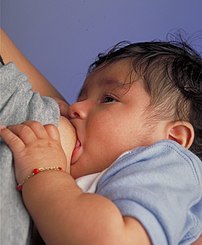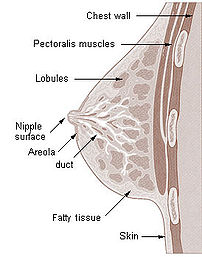
[amazon_link asins=’B01AN7RW7S,B01LZ2ZVCY,B01LC50CFY,B00BUBNZC8,B01JA8W6E0,B01CQPPLZA,B002KGHUL4,B005MI648C,B0070767DU’ template=’ProductCarousel’ store=’finmeacur-20′ marketplace=’US’ link_id=’bfce16c2-65e5-11e7-90db-45376e5fdae2′]
A new study by UK and US scientists has revealed that the sheer physical effort involved in breastfeeding may leave babies with stronger lungs well into childhood.
Previous studies have established that breastfeeding protects babies from respiratory problems early in life, but the relationship with lungpower later in childhood is less clear-cut.
For the study, the researchers followed a total of 1,456 babies from the Isle of Wight all the way through to there 10th year to test this.
A third of them had been breastfed for at least four months, and on average, these children could blow out more air after taking a deep breath, and could blow it out faster.
This happened regardless of whether their mother was asthmatic or suffered from allergies.
Other studies have suggested that immune chemicals in breast-milk may have a protective effect against asthma.
However, the scientists from Southampton University and the College of Veterinary Medicine in Michigan State University, said that the changes in lung volume they found were not completely characteristic of an asthmatic response, suggesting that other factors might be at work.
Dr Syed Arshad, from Southampton and the David Hide Asthma and Allergy Research Centre on the Isle of Wight, said that the physical effort needed to extract milk from the breast might be involved.
On average, babies needed to generate three times the sucking power compared to bottle-feeding, and feeding sessions tended to last much longer.
“What they are doing is very similar to the kind of exercises we suggest for pulmonary rehabilitation in older patients. I’m not aware of anyone suggesting that this might be the reason before,” BBC quoted Arshad, as
saying.
These researchers have now approached a bottle manufacturer with proposals to create a bottle, which mimics the effort needed to breastfeed.
He said that it was now feasible to conduct lung function tests on infants, which meant that a trial to see if it made a difference could be concluded within a year.
Dr Elaine Vickers, from Asthma UK, said that the study added to the evidence that breastfeeding has “long-lasting benefits” for children.
“While the results of the study don’t focus specifically on asthma, the researchers were able to demonstrate that children breast-fed for four months or longer had better lung function than those who weren’t breast-fed at all, or who were breast-fed for less than four months,” she added.
Sources:From The study is published in the journal Thorax.



![Reblog this post [with Zemanta]](https://i0.wp.com/img.zemanta.com/reblog_e.png?w=580)
